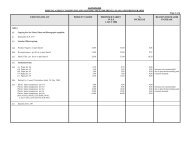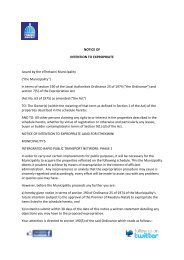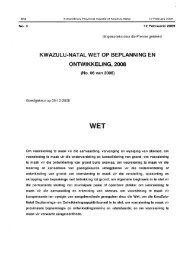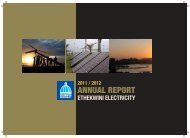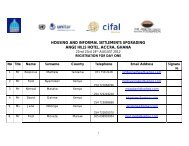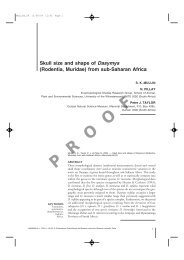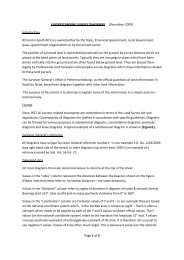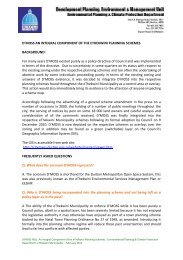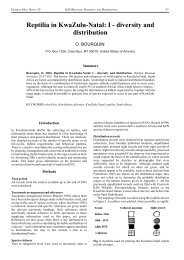A Return to Paradise and its People - Durban
A Return to Paradise and its People - Durban
A Return to Paradise and its People - Durban
You also want an ePaper? Increase the reach of your titles
YUMPU automatically turns print PDFs into web optimized ePapers that Google loves.
In 1823, the first European settlement arrived on the<br />
ship, The Salisbury, under the comm<strong>and</strong> of Lieutenant<br />
James King, with the aim of trading up <strong>and</strong> down the South<br />
African coast. While inclement weather forced the vessel<br />
<strong>to</strong> anchor in the sheltered area off the coast of <strong>Durban</strong>,<br />
her accompanying ship, the Julia, sailed over the s<strong>and</strong>bar<br />
<strong>and</strong> surveyed the bay.<br />
King immediately recognised the importance of the bay<br />
<strong>and</strong> returned <strong>to</strong> Engl<strong>and</strong> <strong>to</strong> try <strong>and</strong> garner support for an<br />
English settlement. He was unsuccessful, <strong>and</strong> soon sailed<br />
back <strong>to</strong> Port Natal, as it had come <strong>to</strong> be called by the<br />
Europeans.<br />
King then befriended King Shaka Zulu who granted him<br />
l<strong>and</strong> around the bay, <strong>and</strong> sent him <strong>to</strong> Engl<strong>and</strong> with two of<br />
his chiefs on a diplomatic mission. But the party got no<br />
further than Port Elizabeth <strong>and</strong> King returned <strong>to</strong> Port Natal<br />
once more, moving <strong>to</strong> the Bluff across the bay, where he<br />
died of dysentery in 1828.<br />
This rough, uncertain life frequently had lethal results<br />
<strong>and</strong> at one point the number of settlers at the bay was no<br />
more than six. At a meeting in 1835, attended by the full<br />
complement of settlers at the time – 15 in all – a <strong>to</strong>wn was<br />
proclaimed, <strong>and</strong> named in honour of the Governor of the<br />
Cape, Sir Benjamin D’Urban.<br />
Despite initially gr<strong>and</strong>iose plans, little development <strong>to</strong>ok<br />
place in this early settlement. Dwellings of rudimentary<br />
mud <strong>and</strong> wattle nestled in the coastal bush, <strong>and</strong> a full 12<br />
years after the proclamation, there were still no streets.<br />
Although the settlers maintained cordial relations with<br />
the powerful founder of the Zulu nation <strong>to</strong> their north,<br />
matters changed for the worse when Shaka’s successor<br />
Dingane <strong>to</strong>ok over. Under Shaka’s rule, the Zulus considered<br />
the area <strong>to</strong> be their terri<strong>to</strong>ry but had <strong>to</strong>lerated the white<br />
settlers whose trading hab<strong>its</strong> were useful <strong>to</strong> them. Whereas<br />
THE CITY HALL Built in 1910 in the neo-baroque style, the City<br />
Hall was inspired by the Belfast City Hall in Northern Irel<strong>and</strong>. This<br />
h<strong>and</strong>some s<strong>and</strong>s<strong>to</strong>ne building is adorned with allegorical sculptures<br />
in the neo-classical style representing art, music, literature, commerce<br />
<strong>and</strong> industry. The hall, with <strong>its</strong> sumptuous interior <strong>and</strong> beautiful<br />
acoustics, is used as a venue for cultural <strong>and</strong> social events <strong>and</strong><br />
regularly hosts concerts by the KwaZulu-Natal Philharmonic Orchestra.<br />
The building houses the Mayor’s Parlour as well as the City Library,<br />
the Natural Science Museum <strong>and</strong> the <strong>Durban</strong> Art Gallery.<br />
11


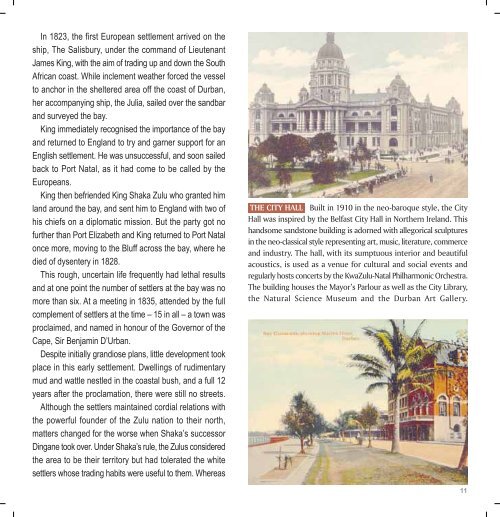
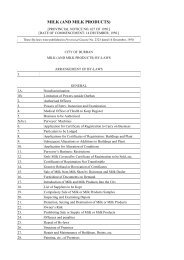
![INK Environmental Sustainability Booklet [19 MB] - Durban](https://img.yumpu.com/22025104/1/190x136/ink-environmental-sustainability-booklet-19-mb-durban.jpg?quality=85)

